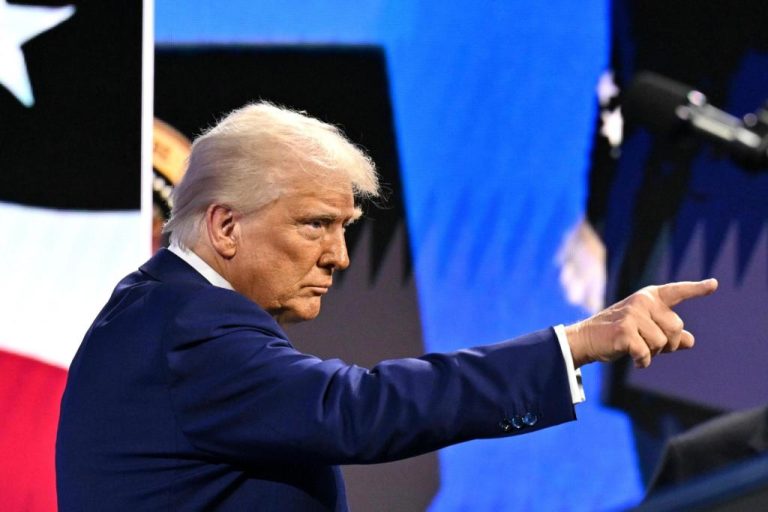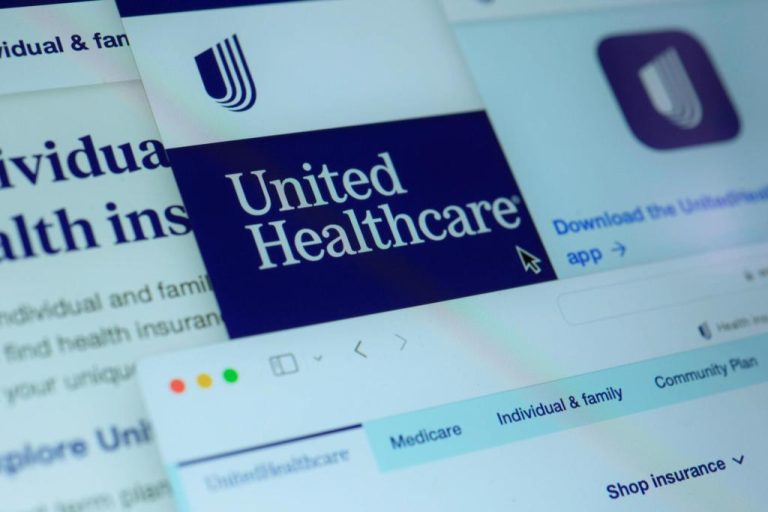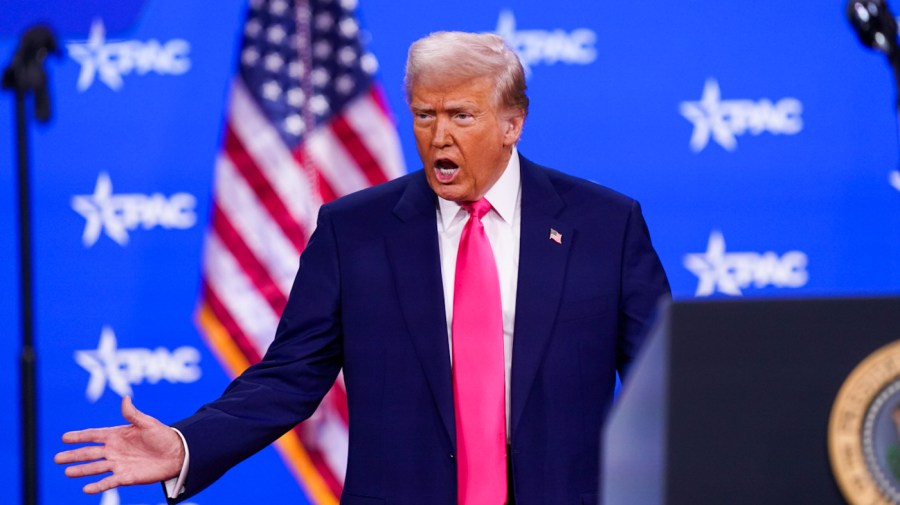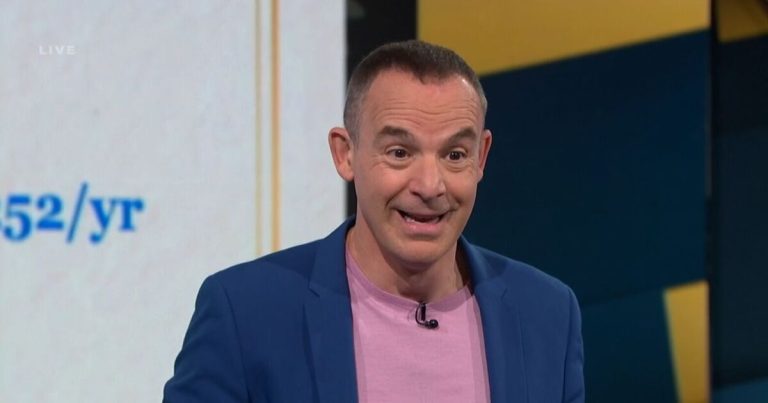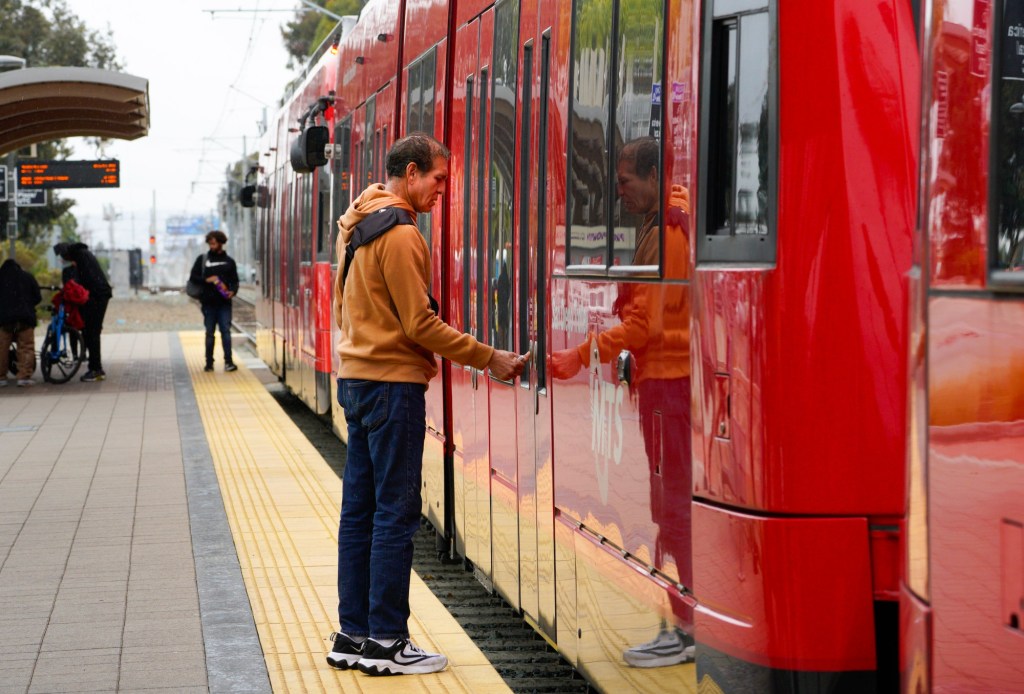
San Diego transit officials took key initial steps Thursday toward raising fares across the board for the first time since 2009 and making major cuts to local bus and trolley service.
Other big moves made by the Metropolitan Transit System board include launching an analysis of potential November 2026 ballot measures to raise revenue, either through higher sales taxes or vehicle license fees.
MTS has explored sales tax hikes before, but it has never placed one on a ballot. Agency leaders haven’t previously considered a hike in vehicle license fees, which could follow the lead of Santa Clara County and the $10 annual fee it charges all registered vehicles.
While an increase in vehicle license fees would generate less than a sales tax hike, it would only need approval from a simple majority of voters — not the two-thirds majority a sales tax hike would need.
MTS is preparing a variety of potential big moves that could help close a structural budget deficit of nearly $120 million a year. Without new revenue, officials say fare hikes and service cuts will be hard to avoid.
But potential service cuts and higher fares could threaten recent gains in ridership, which has nearly returned to pre-pandemic levels.
Sharply increased use of mass transit is crucial to San Diego’s plans to cope with projected population growth. Instead of encouraging more sprawling suburbs, the city plans to encourage the construction of high-density housing developments in existing neighborhoods.
Traffic on city roads could grind to a halt if too many residents rely on driving to get around, so city officials say mass transit must be part of any long-term solution.

On a fare increase, the board voted unanimously Thursday to launch a comprehensive fare study that would be required to raise the cost of one-time fares, day passes and monthly passes for the first time in 16 years. A one-time fare now costs $2.50.
The lack of fare increases has left MTS revenue roughly 30% to 40% below what it was in real dollars in 2009, the last time fares were raised across the board, said Brent Boyd, the agency’s director of planning and scheduling.
The $72 price of an MTS monthly pass would be $110 if it had been adjusted for inflation over the years, Boyd told the board Thursday.
Boyd said MTS gets less money per passenger than each of the 15 transit agencies MTS benchmarks itself against.
The study, which is expected to take between one and two years, will focus on the optimum amount for a fare increase and how such an increase would affect ridership, access to transit and the MTS budget.
The study will also have to consider Title VI of the 1964 Civil Rights Act, which ensures transit changes and other governmental policies don’t discriminate based on race.
It will be a countywide study, with cooperation from the North County Transit District. The study will be led by the county’s regional planning agency, the San Diego Association of Governments.

On the possibility of service cuts, MTS will pay a consultant somewhere between $600,000 and $800,000 to conduct what’s called a comprehensive operational analysis and recommend possible changes.
MTS has performed such analyses twice before, in 2006 and 2017.
But Boyd said it’s time for another one because of the budget crisis, changes in commuting patterns since the pandemic and recent service changes, including the extension of the Blue Line to UC San Diego and the addition of the Copper Line in East County.
“We think it’s time to look at the system again,” he said.
The consultant will be asked to prepare strategic plans for two separate scenarios: one where MTS secures significant new revenues that could be used to enhance service, and one where cuts are needed because that doesn’t happen.
The MTS board has already decided to cancel plans to increase the frequency of service on the Blue Line extension from one train every 15 minutes to one train every seven-and-a-half minutes.
That change, which had already been postponed from last year, was slated to be revived this June, until the board agreed to cancel it Thursday.
MTS recently issued a request for proposals for a consultant to lead the new comprehensive analysis.
Officials said they would expect the strategic plan for cuts to be ready in late 2026 — good timing if a revenue measure fails on the November 2026 ballot.
They said the strategic plan for enhanced service would be ready late this year, early enough to help determine what a revenue measure would fund so such information could be included with ballot materials.
A half-cent sales tax measure, which would apply only to the MTS service area and not to North County, would raise about $300 million a year for transit projects and operations, MTS chief executive Sharon Cooney said.
She said one reason for optimism is that a previous attempt five years ago had strong support in polls.
“It had been polling well,” she said. “But ultimately the COVID pandemic hit, and it was decided that we couldn’t ask the voters.”
That measure would have paid for more frequent trolley and bus service, 21 new rapid bus routes, on-demand services and grade separations in some locations to allow trains to avoid congestion.
That highlights one potential challenge for a new ballot measure that could limit its appeal to voters: This time, the money would primarily preserve existing service by solving a budget crisis, rather than pay for new service, said Gordon Meyer, MTS manager of financial planning.
Carrie Downey, a Coronado City Council member and a member of the MTS board, expressed concern about the possibility of SANDAG simultaneously trying for a countywide sales tax increase for transportation projects.
Voters last November rejected a half-cent sales tax hike placed on the ballot by a citizens’ initiative that wound have funded SANDAG transportation projects.
“How are we trying to not be at odds with each other?” said Downey, expressing concern about two similar measures appearing on the same ballot. “I don’t think both of us are going to get it at the same time.”
Cooney said the MTS board would have to make a final decision on a sales tax measure by May 2026 for it to make the November 2026 ballot.

Sean Elo-Rivera, a San Diego City Council member and a member of the MTS board, said he might prefer MTS focus instead on a countywide hike in vehicle license fees that would help fund transit projects.
He explained that a state law approved in 2009, SB 83, created the opportunity for counties to add a $10 local surcharge to state vehicle registration fees.
That would require only simple majority approval, whereas an MTS sales tax hike would need two-thirds support because the money would be used for a specific purpose.
Cooney said DMV data show there are just under 3 million registered vehicles in the county, so such a measure would generate about $30 million per year.
But not all of that money would go to MTS, because the measure would be countywide and because SB 83 allows the money to fund other efforts, such as pollution mitigation.
Elo-Rivera said he’d like to get more ambitious. He said MTS, using SB 83 as a model, could persuade a local state legislator to get a law approved that would raise vehicle license fees by a wider margin.
And Elo-Rivera suggested such a measure could create a sliding scale, where the owners of inexpensive cars would pay much less than the owners of cars valued at more than $100,000.
He said his calculations indicate a measure like that could raise $100 million a year.
Originally Published:


